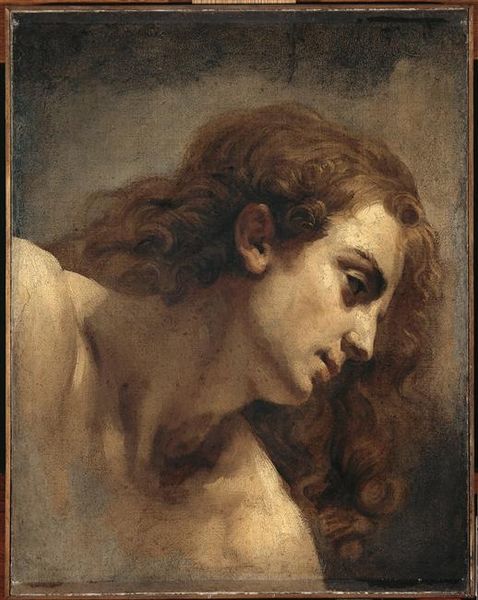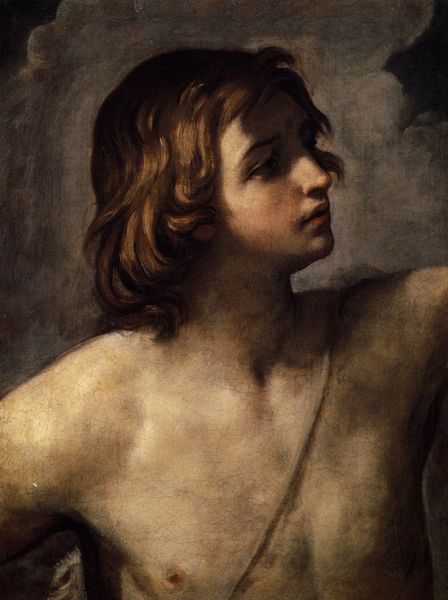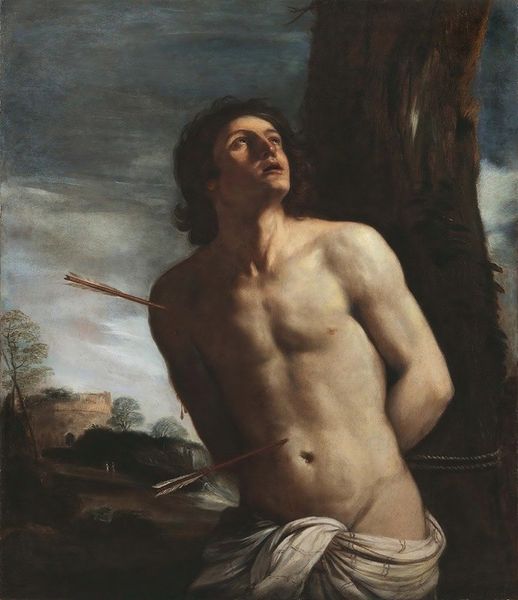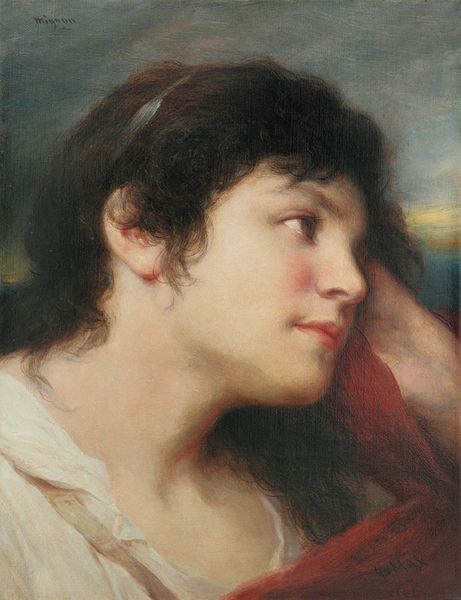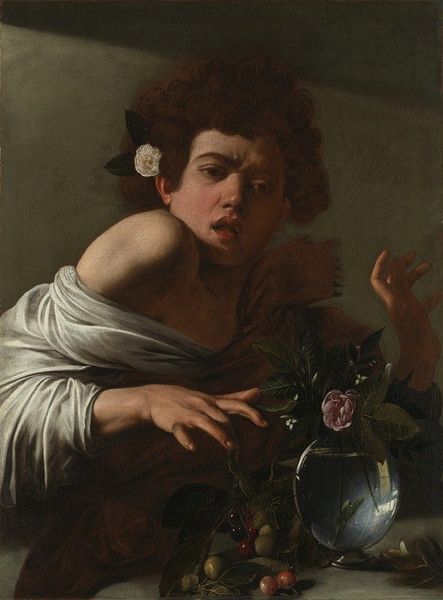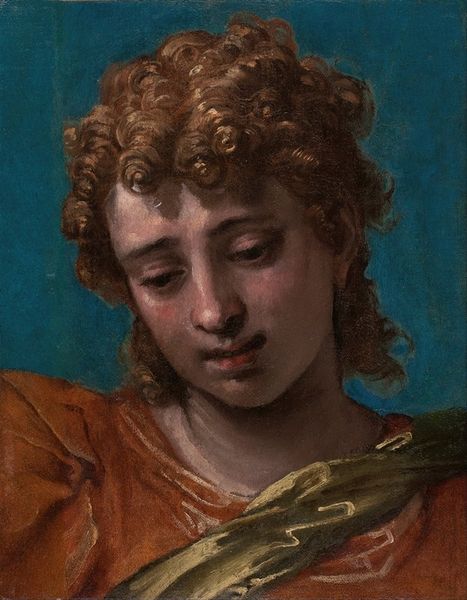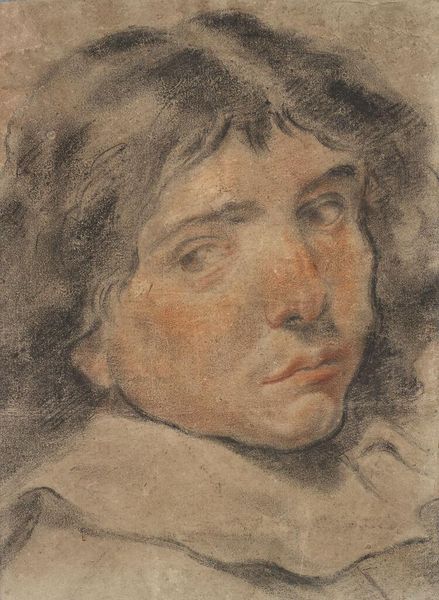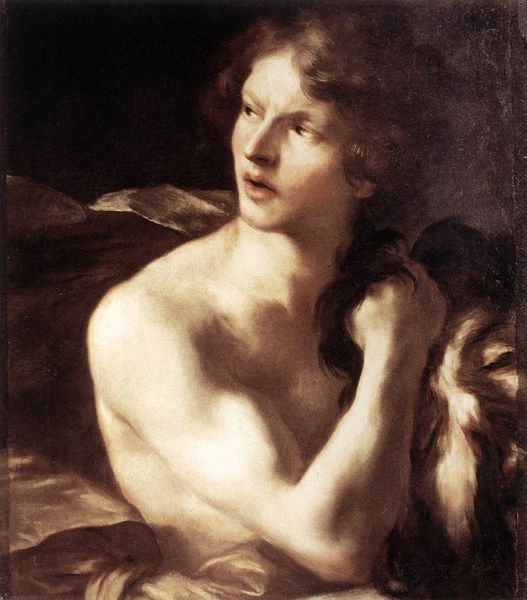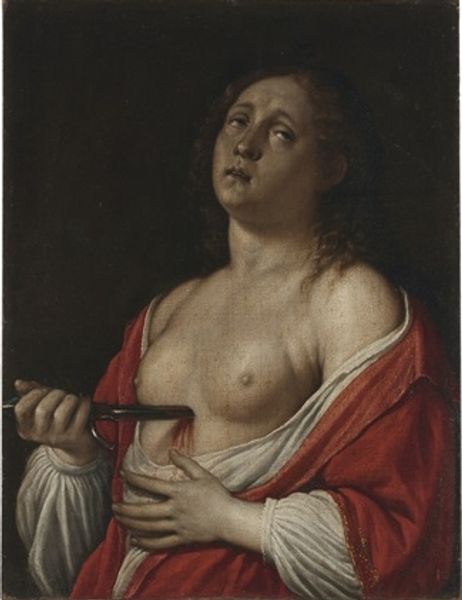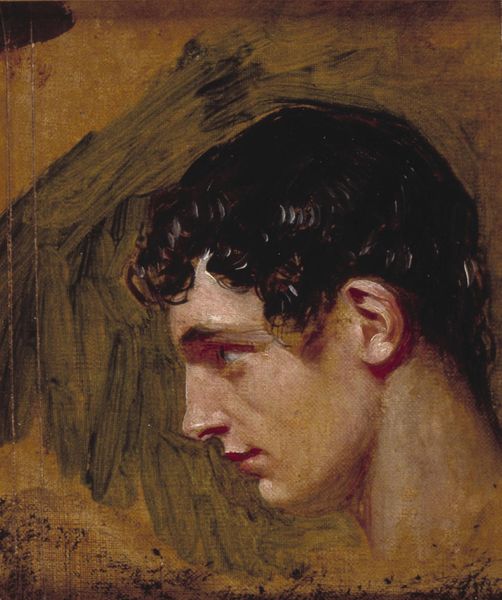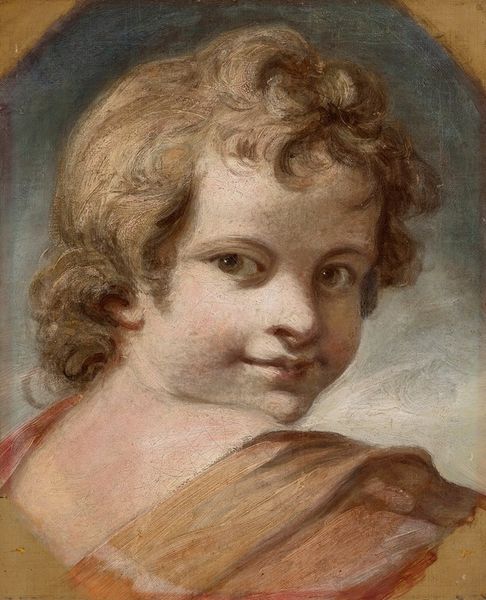
painting, oil-paint
#
portrait
#
figurative
#
baroque
#
painting
#
oil-paint
#
figuration
#
flemish
#
genre-painting
#
portrait art
Copyright: Public Domain: Artvee
Editor: This is Peter Paul Rubens' "Head of a Young Man," painted around 1601 or 1602 using oil paint. The figure's gaze is really striking; he's looking off to the side as if startled. How do you interpret the intensity of his expression? Curator: The beauty of Rubens lies in his ability to capture fleeting emotional states. Notice how the eyes, slightly widened, don't just reflect light but also an internal psychological moment. In the Baroque era, representations of intense emotion often signified deeper truths about the human condition. Editor: That's fascinating. What’s so special about the expression in terms of iconology? Curator: Here, consider how vulnerability is visually communicated. It might reflect a broader cultural fascination with capturing the emotional range of humanity during that period. Rubens’ contemporaries would immediately associate the youth with classical ideals. The slightly unkempt hair hints at natural vitality, the kind idealized in ancient sculptures of youths and gods. It connects this one head to a historical chain of symbolic representation. Editor: I hadn’t thought about the classical connection. The single head gives me a new angle to consider portraiture. Curator: Exactly. Think of the historical, psychological, and symbolic threads woven together in what might initially appear as just a simple portrait. It helps understand how artworks acquire layers of meaning across generations. Editor: Thanks, it adds a richness to something seemingly basic. Curator: My pleasure; seeing art through multiple perspectives opens up fresh new appreciation for the cultural memory it represents.
Comments
No comments
Be the first to comment and join the conversation on the ultimate creative platform.
